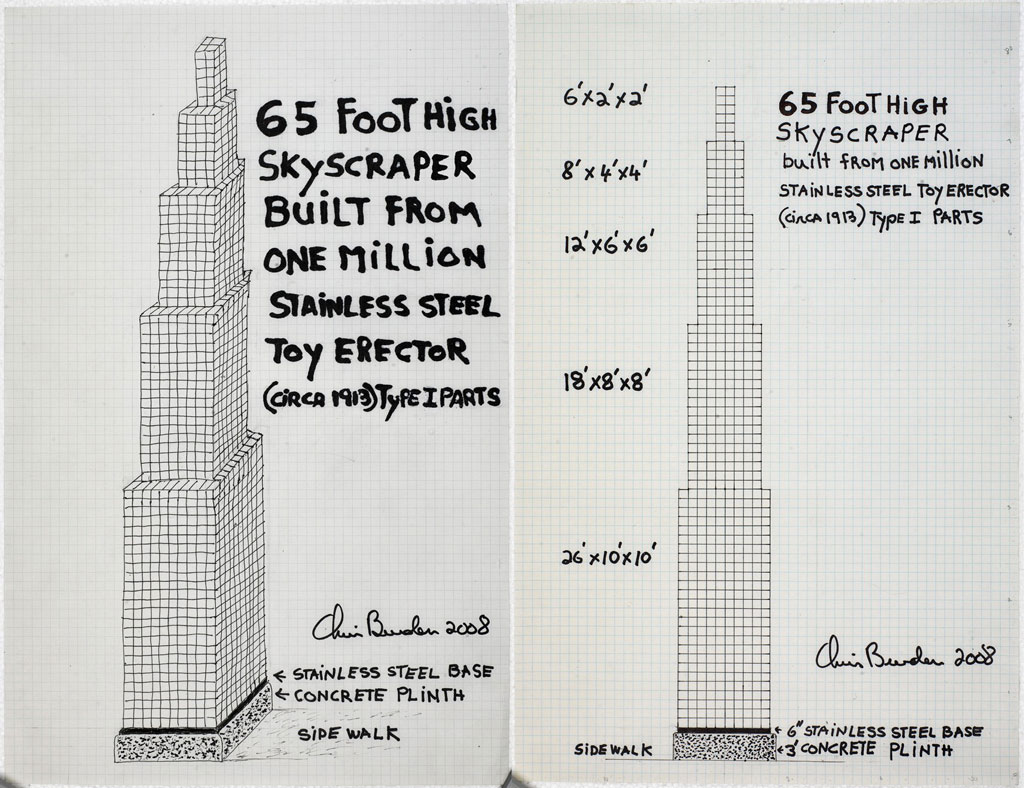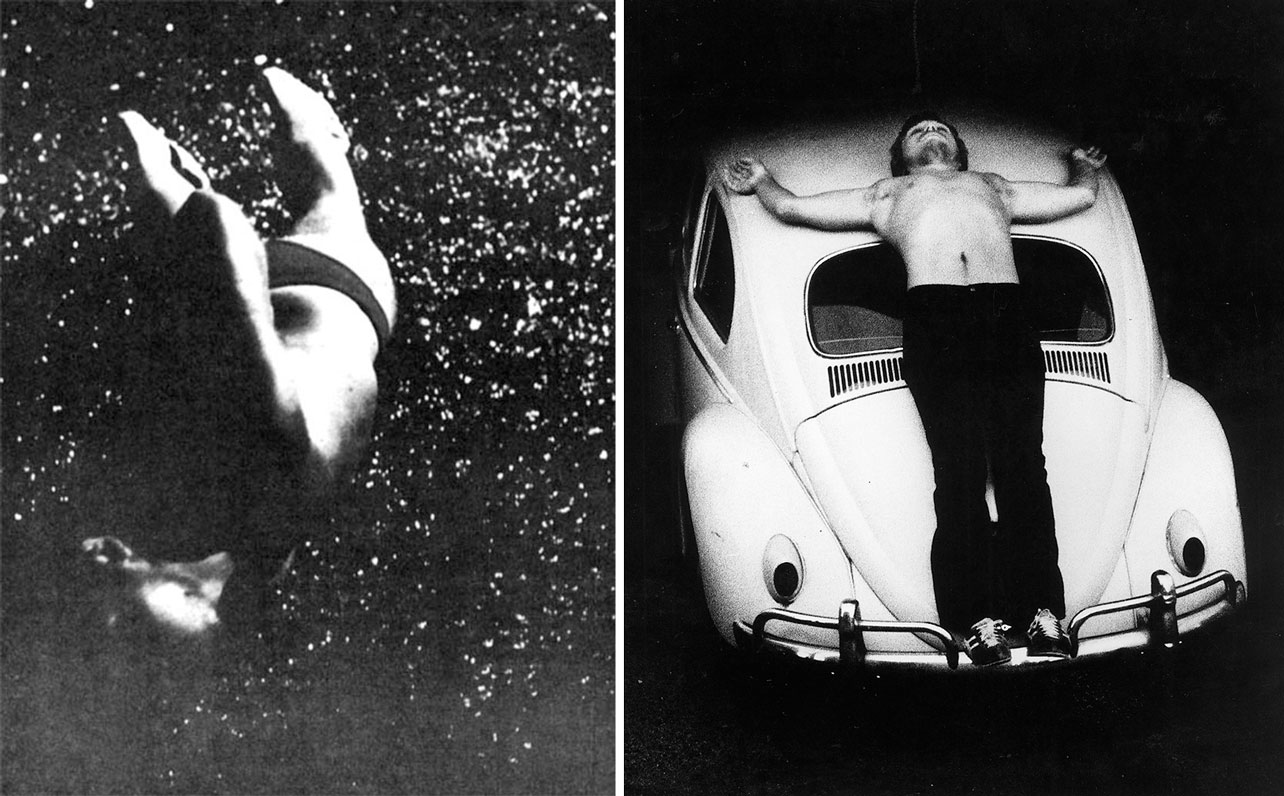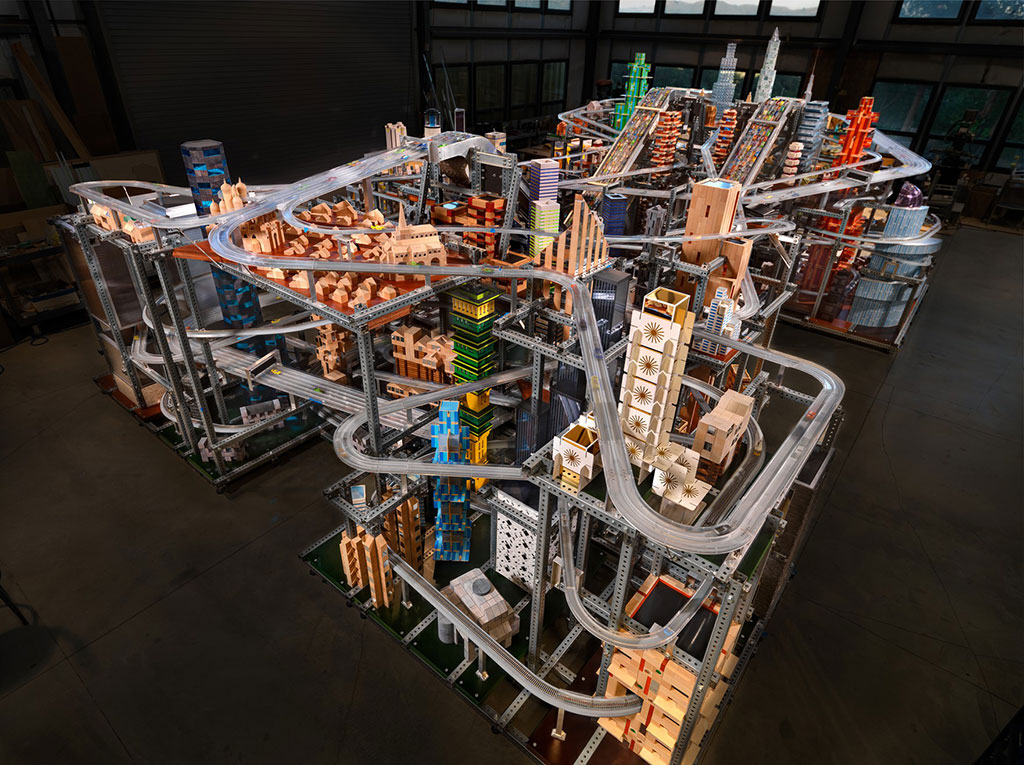TRACES: Chris Burden
 Today is the occasion to bear in mind Chris Burden (11/4/1946-10/5/2015). From his action-based works of the 1970s to technical feats of his later sculptures, Chris Burden consistently challenged his mental and physical limitations, reflecting on the surreal and precarious realities of contemporary life. Burden was a radical and uncompromising figure with a fierce political consciousness. Through documents or interviews, starting with: moments and memories, we reveal out from the past-unknown sides of big personalities, who left their indelible traces in time and history…
Today is the occasion to bear in mind Chris Burden (11/4/1946-10/5/2015). From his action-based works of the 1970s to technical feats of his later sculptures, Chris Burden consistently challenged his mental and physical limitations, reflecting on the surreal and precarious realities of contemporary life. Burden was a radical and uncompromising figure with a fierce political consciousness. Through documents or interviews, starting with: moments and memories, we reveal out from the past-unknown sides of big personalities, who left their indelible traces in time and history…
By Dimitris Lempesis
 Chris Burden was born in Boston and grew up in France and Italy. When he was 12, Burden was involved in a motorcycle accident in Italy that required his foot to be operated on without anesthesia. This traumatic event seemed to be the catalyst for his future works that focused on self-inflicted physical pain. Burden moved back to the states and finished high school in Cambridge, Massachusetts. Burden earned his MFA in 1971 from the University of California, Irvine, where he studied under the conceptual artist Robert Irwin. Like Irwin (whose site-specific architectural interventions consider the effects of space and light on the viewer) Burden was interested in the staging of spectacle and the ways in which art could complicate one’s understanding of the material world. In his early performances Burden responded to the violent realities of the Vietnam War by putting his body at risk. For “Five Day Locker Piece” (1971), he locked himself into a school locker, drinking water from a five-gallon bottle stored in the locker above and urinating into a five-gallon bottle in the locker below. That same year, for “Shoot” (1971), one of his friends shot him in the left arm from a distance of 4.5 meter. The piece, which lasted only about eight seconds, was recorded on Super-8 film. “Trans-Fixed” (1974) involved the literal transfixion of Burden to a Volkswagen via nails through the palms of his hands. After he was nailed to the car it was rolled out of a garage and displayed to an audience. The engine was revved at full throttle to represent the sound of screaming in pain. The parallels between the Crucifixion of Christ and “Trans-Fixed” are obvious. Here again, Burden took the audience out of their comfort zone. An image of the crucified Christ is commonplace in society and no one puts much thought into the fact that many people were crucified in Roman times and it was an agonizing and lengthy way to die. However, Burden reminded the audience of the reality of pain that we so often dismiss or do not even notice. In the late 1970s Burden turned to monumental sculpture, considering how the scale and placement of public infrastructure could be manipulated in order to explore the implications of power, speed, and balance. In 1979 he created “The Big Wheel” a kinetic work composed of a 1968 Benelli motorcycle placed on a wooden frame and attached to a 19th Century metal flywheel. When the bike is mounted and revved, the flywheel is set into motion. This industrial thrill continued in the 1980s and 1990s with “Beam Drop” (1984/2008)—a work that involved dropping I beams from a crane into a large pit of wet concrete and “Medusa’s Head” (1990), an amorphous mass of wood, steel, cement, rock, and model railroad trains and tracks, evocative of a country-sized chunk of earth that has been extracted and squished into a ball. “Beam Drop” was re-created in 2008 at the Inhotim Institute in Brazil, where its final, sculptural product is now permanently installed. In 2000 Burden began collecting street lamps from the 1920s and 1930s, once used in residential neighborhoods of Los Angeles, and repurposing them as sculptural installations. This led to the installation “Urban Light” (2008), comprising 202 lampposts, at the entrance to the Los Angeles County Museum of Art. Starting in 2003, Burden also constructed large-scale models of bridges—both real and imagined with thousands of toy construction parts. “Tower of London Bridge” (2003) mimics every aspect of the famous bridge’s suspension design, including the functional drawbridge, and “Three Arch Dry Stack Bridge, 1/4 Scale” (2013 comprises three elegant arches made of hand-cast concrete blocks held together by gravity. Burden’s last completed work, “Ode to Santos Dumont” (2015), is a kinetic airship modeled after Alberto Santos-Dumont’s 1901 dirigible that flew around the Eiffel Tower. Built over a ten-year period, it achieves indoor flight in fifteen-minute intervals and simultaneously embodies both ambitions of industrial invention and reveries of childhood marvels. Burden died in the Topanga Canyon area of Los Angeles where he worked and lived.
Chris Burden was born in Boston and grew up in France and Italy. When he was 12, Burden was involved in a motorcycle accident in Italy that required his foot to be operated on without anesthesia. This traumatic event seemed to be the catalyst for his future works that focused on self-inflicted physical pain. Burden moved back to the states and finished high school in Cambridge, Massachusetts. Burden earned his MFA in 1971 from the University of California, Irvine, where he studied under the conceptual artist Robert Irwin. Like Irwin (whose site-specific architectural interventions consider the effects of space and light on the viewer) Burden was interested in the staging of spectacle and the ways in which art could complicate one’s understanding of the material world. In his early performances Burden responded to the violent realities of the Vietnam War by putting his body at risk. For “Five Day Locker Piece” (1971), he locked himself into a school locker, drinking water from a five-gallon bottle stored in the locker above and urinating into a five-gallon bottle in the locker below. That same year, for “Shoot” (1971), one of his friends shot him in the left arm from a distance of 4.5 meter. The piece, which lasted only about eight seconds, was recorded on Super-8 film. “Trans-Fixed” (1974) involved the literal transfixion of Burden to a Volkswagen via nails through the palms of his hands. After he was nailed to the car it was rolled out of a garage and displayed to an audience. The engine was revved at full throttle to represent the sound of screaming in pain. The parallels between the Crucifixion of Christ and “Trans-Fixed” are obvious. Here again, Burden took the audience out of their comfort zone. An image of the crucified Christ is commonplace in society and no one puts much thought into the fact that many people were crucified in Roman times and it was an agonizing and lengthy way to die. However, Burden reminded the audience of the reality of pain that we so often dismiss or do not even notice. In the late 1970s Burden turned to monumental sculpture, considering how the scale and placement of public infrastructure could be manipulated in order to explore the implications of power, speed, and balance. In 1979 he created “The Big Wheel” a kinetic work composed of a 1968 Benelli motorcycle placed on a wooden frame and attached to a 19th Century metal flywheel. When the bike is mounted and revved, the flywheel is set into motion. This industrial thrill continued in the 1980s and 1990s with “Beam Drop” (1984/2008)—a work that involved dropping I beams from a crane into a large pit of wet concrete and “Medusa’s Head” (1990), an amorphous mass of wood, steel, cement, rock, and model railroad trains and tracks, evocative of a country-sized chunk of earth that has been extracted and squished into a ball. “Beam Drop” was re-created in 2008 at the Inhotim Institute in Brazil, where its final, sculptural product is now permanently installed. In 2000 Burden began collecting street lamps from the 1920s and 1930s, once used in residential neighborhoods of Los Angeles, and repurposing them as sculptural installations. This led to the installation “Urban Light” (2008), comprising 202 lampposts, at the entrance to the Los Angeles County Museum of Art. Starting in 2003, Burden also constructed large-scale models of bridges—both real and imagined with thousands of toy construction parts. “Tower of London Bridge” (2003) mimics every aspect of the famous bridge’s suspension design, including the functional drawbridge, and “Three Arch Dry Stack Bridge, 1/4 Scale” (2013 comprises three elegant arches made of hand-cast concrete blocks held together by gravity. Burden’s last completed work, “Ode to Santos Dumont” (2015), is a kinetic airship modeled after Alberto Santos-Dumont’s 1901 dirigible that flew around the Eiffel Tower. Built over a ten-year period, it achieves indoor flight in fifteen-minute intervals and simultaneously embodies both ambitions of industrial invention and reveries of childhood marvels. Burden died in the Topanga Canyon area of Los Angeles where he worked and lived.














